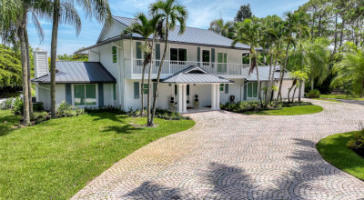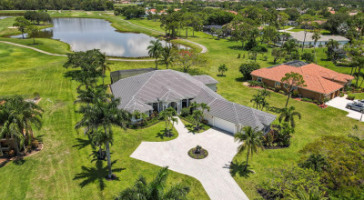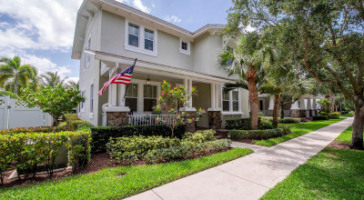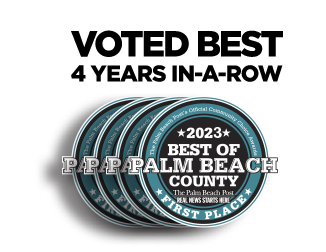Get Email Updates
Get an email the instant your dream home hits the market with your MyLogin account
Updated June 24, 2025 5:28AM EST








View exclusive Market Reports & Stats on your South Florida Community.
Get your Free Market ReportDetermine your home's estimated value based on ecent homes sales in your area.
The largest and most complete private directly of commercial listings not on the MLS. Contact us directly with your specific needs to see if we have a match.

5 MAY
Uncategorized
During the past three years, we have seen a constriction of supply in the commercial real estate market (CRE). In South Florida, there is a serious shortage of cost-effective, quality industrial, retail and agricultural properties available. The fact that we have become a destination state in the past few years, sporting tax and development incentives that many other states do not, keeps our demand much higher than national averages. However, we may be in a position where that is going to change rapidly. Credit cost and availability may cause many to reconsider their holdings, thereby creating an opportunity to buy more reasonably than in the recent past, or in some negative cases, seeing a rise in defaults.
The premise is that the Federal Reserve has raised the discount rate from near zero to over 5% in less than a year and a half, which has caused revolving credit to become very expensive compared to the time that it was acquired. Furthermore, both large and small banks are seeking inflow rather than outflow (again, the Fed’s idea that taking money out of the system will help wrangle inflation) credit is getting harder to get.
Andrew Nelson, real estate economist with deep experience in the property sector, offers that Vornado Real Estate Trust, a large REIT that focuses on properties in New York, Chicago and San Francisco, reports on their April K-8 filing that they are being cut off from credit. “There is no new debt available…when a loan comes due, the only refinance available (and that is with a fight) is from the existing lender.” They are referring specifically to office structures specifically, but the problem is permeating other sectors of CRE as well. Nelson Economics analysis of Federal Reserve Bank of Dallas survey offers sees lenders becoming more risk averse, seeing tightening credit standards rise 10-15% from 2022 which correlates to a similar drop in credit volume.
Banks saw deposit outflows in March reach $250 Billion from small banks and $150 Billion from large banks. $400 Billion in withdrawals has increased the concerns that banks need to pay immediate attention to deposits. April has been flat, but stopping the bleeding is not correcting the problem. Catherine Rampell of FloridaRealtors.org reports that the Federal Reserve reported that commercial bank lending fell by over $100 Billion in the two weeks ending March 29th. This is the largest cutback in bank lending in dollar terms going back over 50 years.
The Mortgage Bankers Association (MBA) estimates that “of approximately $4.4 trillion of outstanding commercial and multi-family mortgages, $728 Billion (16%) matures in 2023, with another $659 Billion (15%) maturing in 2024. 25% approximately of this is in the office sector. When these come due, the refinancing will be at a significantly higher rate than what the holders are paying, and decisions will have to be made.
Nationally, property values are falling. After peaking in 2022, estimates are showing CRE down 15%, led by 25% declines in office and 21% in apartments. Cap rates are rising, which signifies more risk overall in the market. All of this supports lower debt levels on the horizon.
Again, South Florida has been a unique entity for the past few years. We have lured hedge funds that have moved their base of operations to the Palm Beaches and have a healthy number of new restaurant groups that are opening successful eateries all over the area. Population continues to grow every year, and where there are people, there are opportunities for growth.
Goldman Sachs offers a potential silver lining to the debt shortage: Private investors are stepping in to lend to CRE as smaller banks may be forced to step back. There will be capital available to those that can afford it. The caveat is knowing what one can afford. In South Florida, with demand holding tight and supply remaining low, it will be interesting to see if this banking cloud dissipates or turns into a named hurricane.

6 Beds | 6/1 Baths
Contact Homaira at 561.657.0500
Offered at $4,250,000
More Info
5 Beds | 6/1 Baths
Contact Craig at 561.246.1789
Offered at $3,895,000
More Info
5 Beds | 4 Baths
Contact Savannah at 786.251.4177
Offered at $2,749,990
More Info
5 Beds | 4 Baths
Contact William at 561.602.7373
Offered at $1,699,990
More Info
4 Beds | 3 Baths
Contact Charles at 561.319.3742
Offered at $1,499,900
More Info




Echo Fine Properties, winner of Best Brokerage of the Palm Beaches in 2020, 2021 and 2022, is located in Palm Beach Gardens, Florida. We are a family-owned local brokerage that prides itself on having the finest full time luxury real estate agents who know the area backward and forward. Each agent is hand selected to join us for their knowledge of the area including golf club communities, gated communities, equestrian and ranch estates, condominiums, and waterfront and boating estates. Echo is unique in real estate in that our company pays for all marketing, advertising, and all support which is handled in-house. WE PAY, which lets the agent concentrate on our customers. Unlike other firms, agents never have to compromise the marketing budget. Our Home ECHOnomics Guarantee offers an unheard of 57-promises. This website consists of 5 separate MLS feeds, giving 100% accuracy ranging from Miami to Fort Lauderdale to Palm Beach to Martin County.
© 2020, © 2021 and © 2025 Echo Fine Properties, All Rights Reserved. Powered by Neutrino, Inc. Authored by Jeff Lichtenstein
Use of this website and information available from it is subject to our Privacy Policy and Terms & Conditions
or Create your MyHomes account today?

In only 30 seconds you will have full access to property, community info and SOLD data you can't get anywhere else.
